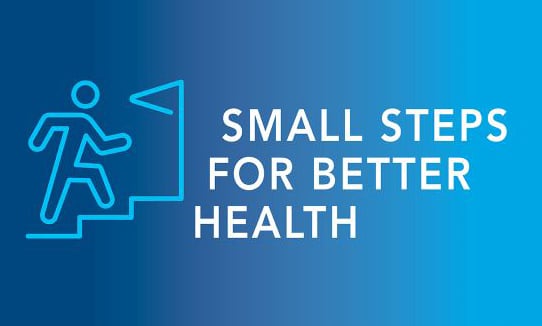

Sep 04 2024
Healthy Eating on a Budget


Summary
Use these tips to incorporate more healthy foods into your diet while sticking to your grocery budget.
Subscribe to our podcast to follow along with Small Steps for Better Health.
Today, we are diving into the delicious world of eating healthy without breaking the bank.
A common barrier to a healthy diet is the cost of nutritious foods. However, eating well doesn’t have to be overly expensive, and there are many ways to save money and still eat to support your health.
If you’ve been following along with Small Steps for Better Health, you may have found that your grocery bill has increased as you’ve tried to cook more at home and incorporate more vegetables and fruits. If so, I hope this guide will help you continue to eat well while staying within your budget.
The first and most important step is to plan ahead! Take a few minutes on the weekend or whenever is a good time for you and come up with a meal plan for the week. Here are some tips to help you get started:
- First, take stock of your fridge and pantry. What do you already have that you could turn into a meal with no extra ingredients or only one or two additional items? What do you have that may be expiring or going bad soon that needs to be used quickly?
- From there, check out your grocery store’s weekly ads. See what’s on sale that you could incorporate into your plan.
- Remember, every meal doesn’t have to be a full “recipe.” Pick a meat or protein option and one or two side items like vegetables and starches, and you’ve got a well-rounded meal!
- Include meals that can “stretch” your food, like stews and stir-fries.
Shop when you are not hungry and not rushed, so you can make the best decisions. - Buy store brands. They are usually cheaper and taste the same.
- Buy fresh fruits and vegetables when they are in-season and less expensive.
- Pre-cut fruits and veggies may be convenient, but they are usually much more expensive.
- Double up on a recipe to pack leftovers for lunch or eat later in the week.
- Add any leftover meat and veggies into a large green salad.
- Decrease the amount of packaged snack foods (better for your health AND wallet!)
- Go meatless one or more days a week. Replace meat with beans or lentils. They are delicious, cook up quickly and are full of fiber and protein.
Some items are lower cost year-round, like:
- Protein: Beans and peas (dry legumes are less expensive than canned)
- Vegetables: Carrots, greens, potatoes, onions, canned or frozen corn, green beans
- Fruits: Apples, bananas, canned fruit without added sugar
- Grains: Brown rice, oats
- Dairy: Fat-free or low-fat milk
Source: USDA MyPlate
Small Steps, Better Health
Every two weeks we will introduce another Small Step for Better Health. Follow us on social media for more tips, and sign up for our email newsletter, True North.

Subscribe to Our Newsletter
Like this content and want to get more? Sign up for True North, the health and wellness newsletter from North Mississippi Health Services!

Subscribe to Our Newsletter
Like this content and want to get more? Sign up for True North, the health and wellness newsletter from North Mississippi Health Services!

Nurse Link®
Not sure if you need Urgent Care or the ER? Call 1-800-882-6274 anytime to speak directly to a registered nurse and get immediate answers. Using computerized medical protocols, nurses direct callers to the most appropriate treatment. Our nurses are available 24 hours per day, seven days per week.